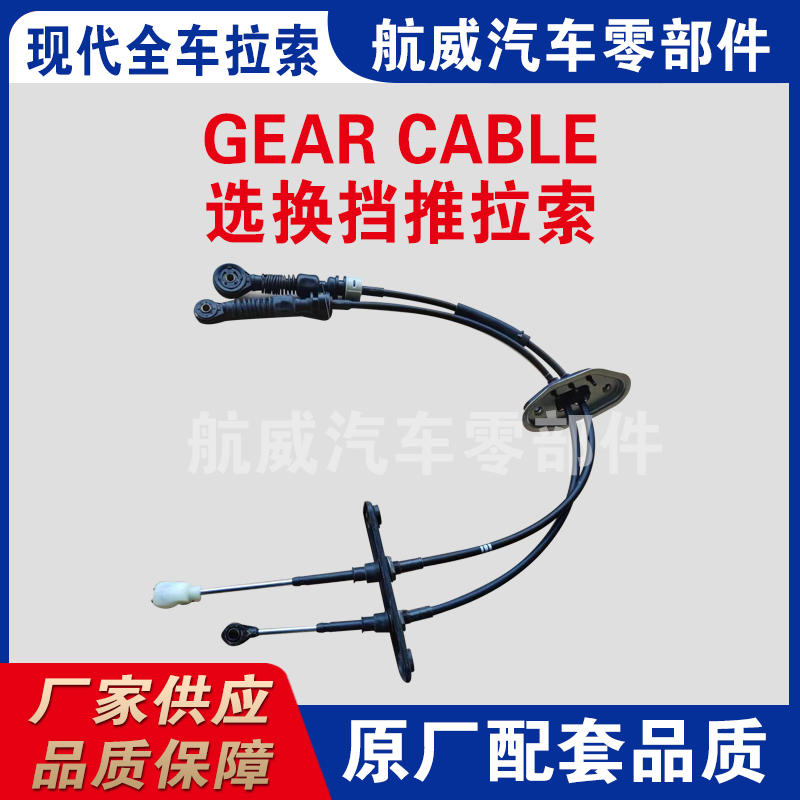accelerator pedal cable
Understanding the Accelerator Pedal Cable A Crucial Component in Modern Vehicles
The accelerator pedal cable is an essential component in the operation of modern vehicles, playing a crucial role in the performance and functionality of the vehicle's engine. While it may seem like a simple feature, it is a vital link between the driver's intent and the engine's response, influencing everything from acceleration to fuel efficiency. In this article, we will explore the accelerator pedal cable's purpose, its components, how it works, common issues that can arise, and its evolution in modern vehicles.
What is the Accelerator Pedal Cable?
The accelerator pedal cable, often referred to as the throttle cable, connects the accelerator pedal to the throttle body of the vehicle's engine. When the driver presses the accelerator pedal, the cable creates tension that opens the throttle valve, allowing more air and fuel into the engine, which increases the vehicle's speed.
Traditionally, this mechanism operated through a direct, mechanical connection. However, advancements in automotive technology have led to the development of electronic throttle control systems, which we will discuss later.
Components of the Accelerator Pedal Cable
The accelerator pedal cable system consists of several components
1. Accelerator Pedal The part pressed by the driver. 2. Throttle Cable The actual cable that transmits the motion from the pedal to the throttle body. 3. Throttle Body The component that regulates air intake to the engine—often equipped with a throttle valve. 4. Cable Housing The outer casing protecting the cable, which can be subject to wear and tear over time.
How It Works
When a driver presses the accelerator pedal, the pedal pivots and pulls on the cable, which in turn pulls the throttle valve open (or increases the angle of the throttle plate). This movement allows more air to enter the engine, increasing the power output. The proportion of how far the throttle is opened corresponds to the position of the accelerator pedal, translating the driver’s input into speed.
accelerator pedal cable

In vehicles with a mechanical throttle cable system, this system is relatively straightforward. However, with the transition to electronic throttle controls (ETC), physical cables are often replaced with electrical sensors and motors, which we'll delve into next.
Evolution of Accelerator Pedal Systems
Traditional mechanical cable systems have been widely replaced by electronic systems in newer vehicles. Electronic throttle control allows for smoother operation and integration with advanced driving assistance systems (ADAS). In ETC systems, pressing the accelerator pedal sends a signal to the vehicle’s onboard computer, which then adjusts the throttle electronically. This system provides several advantages, such as
- Improved Responsiveness Electronic systems can adjust throttle response more rapidly than mechanical systems. - Enhanced Control Integration with traction control and cruise control systems enhances vehicle safety and performance. - Fuel Efficiency Precise control over throttle openings can improve fuel efficiency by optimizing air-fuel mixtures.
Common Issues with Accelerator Pedal Cables
Despite advancements in technology, issues with accelerator pedal cables can still occur, particularly in older vehicles. Some common problems include
- Cable Fraying or Breakdown Over time, the cable can wear out, leading to reduced responsiveness or complete failure. - Binding or Sticking Dirt, debris, or corrosion in the cable housing can cause the cable to bind, leading to erratic acceleration. - Improper Adjustments In the case of traditional systems, improper installation or adjustments may affect throttle response.
Conclusion
The accelerator pedal cable, whether mechanical or electronic, serves as a pivotal interface between the driver and the vehicle's engine. Understanding this critical component not only sheds light on vehicle performance and efficiency but also emphasizes the importance of regular maintenance and timely repairs. As technology advances, the evolution of the accelerator pedal system reflects the automotive industry's push towards safer, more efficient, and more responsive vehicles. Whether you're a car enthusiast or an everyday driver, appreciating the role of the accelerator pedal cable can enhance your understanding of automotive mechanics and the driving experience as a whole.
-
Workings of Clutch Pipe and Hose SystemsNewsJun.04,2025
-
The Inner Workings of Hand Brake Cable SystemsNewsJun.04,2025
-
The Secrets of Throttle and Accelerator CablesNewsJun.04,2025
-
The Hidden Lifeline of Your Transmission Gear Shift CablesNewsJun.04,2025
-
Demystifying Gear Cables and Shift LinkagesNewsJun.04,2025
-
Decoding Clutch Line Systems A Comprehensive GuideNewsJun.04,2025
